Universal Radio Controller
Halibut Electronics is the exclusive distributor of G1LRO’s Universal Radio Controller outside of the UK and Ireland. If you are in the UK or Ireland and wish to buy a Universal Radio Controller, please go to WWW.G1LRO.UK.
The Universal Radio Controller (URC) is designed by Mark Herbert, G1LRO. Halibut Electronics distributes the URC outside of the countries where Mark Herbert distributes (currently the UK and Ireland). Halibut Electronics can distribute world-wide.
Full technical info on G1LRO’s hardware blog at WWW.G1LRO.UK
The latest version (V2.2) of this multi-port ‘universal’ radio controller is a simple device that sits between your computer and transceiver.
The unit provides the following functions:
- USB-C sound card to convert the receive/transmit audio from the transceiver to USB, capable up to 48,000 samples per second.
- Full PTT control to allow automatic receive & transmit using either serial port settings (DTR & CTS) or the CM108 standard supported by popular software (including DireWolf). PTT switching is by a hardware relay for maximum versatility and reliability.
- CAT (Computer Aided Transceiver) control for connecting to transceivers to allow real-time management of band, frequency and PTT etc. CAT can be two way-so changes on the Radio are shown on the PC software and vice-versa. CAT uses the controller serial port so no special drivers are required.
- Dedicated connections tor connecting HT (Handie Talkies) that will also provide serial port programming of the HT with CHIRP or the manufacturers software. Makes such as Baofeng and Quansheng will work with this.
Audio Connections:
The connection to the radio is either by a TRRS 3.5mm Jack wired:
- Tip TX Audio (plug into the Mic socket)
- Ring 1 RX Audio (from your speaker socket)
- Ring 2 PTT (active low – connect to your PPT line)
- Sleeve Ground
(This connection is wired the same way as the Digirig standard so you can use those cables if you have them.)
OR use 3 discrete 3.5mm jack plugs for:
- Receive Audio
- Transmit Audio
- PTT
OR use an OHIS wired cable.
- OHIS (Open Headset Interconnect Standard) is an emerging standard for connecting equipment and headsets to transceivers: See my blog post about OHIS here
- This unit act as a user device and pass-through functions to the headset user device.
- It allows the sound card features of the unit to overlay the TX/RX audio and provide PTT control so can be used for a variety of purposes such as announcements & recording as well as digital modes.
OR use a pair of cables to your favorite Handy Talkie
- There are two sockets on the modem to connect to the 2.5mm and 3.5mm connection on your HT
- The sockets are both 3.5mm at the modem end
- Wire the plugs pin-to-pin (tip to tip, ring to ring, Sleeve to sleeve) and you are good to go.
- Full TX/RX audio and PTT is available as well as the ability to program the HT using CHIRP or your favorite software.
CAT Connection
The connection to the radio is by a TRRS 3.5mm Jack wired:
- Tip: TX Data from the controller -> RX Data on the radio
- Ring 1: RX Data on the controller <- TX Data from the radio
- Ring 2: A 3.3v CAT device supply line (by default this is not jumper-enabled)
- Sleeve: Ground
(There appears to be a standard around this plug configuration so cables from other vendors may work.)
Other
The inbuilt monitor allows you to listen to the received audio at the press of a button and is very useful where inserting the radio speaker jack switches off the radio’s speaker.
The unit is shipped with the firmware loaded and tested. It is fully powered by the USB connector so ideal for mobile/portable operation.
The CPU used in this unit runs the open-source firmware used on the AIOC and full software support can be found on my hardware blog at WWW.G1LRO.UK
How To Use
The serial interface of the unit enumerates as a regular COM (Windows) or ttyACM port (Linux) and can be used as such for PTT (Asserted on DTR=1 and RTS=0).
The sound card interface of the unit gives access to the audio data channels. It has one mono microphone channel and one mono speaker channel and currently supports the following bit rates:
- 48000 Hz (preferred)
- 32000 Hz
- 24000 Hz
- 22050 Hz (specifically for APRSdroid, has approx. 90 ppm of frequency error)
- 16000 Hz
- 12000 Hz
- 11025 Hz (has approx. 90 ppm of frequency error)
- 8000 Hz
A CM108 style PTT interface is available for public testing. This interface works in parallel to the COM-port PTT.
If you are using DireWolf, add this line in the PTT section (change to match your com port assignment):
PTT COM4 -RTS DTR
Jumper Configuration
There is full information on setting the internal jumpers on my hardware blog at: WWW.G1LRO.UK
As with all technical products there are some bugs and undocumented features. I am maintaining a log of any issues on the CPU page of my blog at WWW.G1LRO.UK but here are the two current bugs:
- HTs with rubber-duck antennas send excessive RF into the URC and cause locking-up problems- workaround is to use an antenna on the portable radio that is connected by a coax cable.
- DireWolf on MacOS can have a problem with audio/PTT – workaround is to use DireWolf on Linux/Pi/Windows. This may be resolved by firmware upgrade.
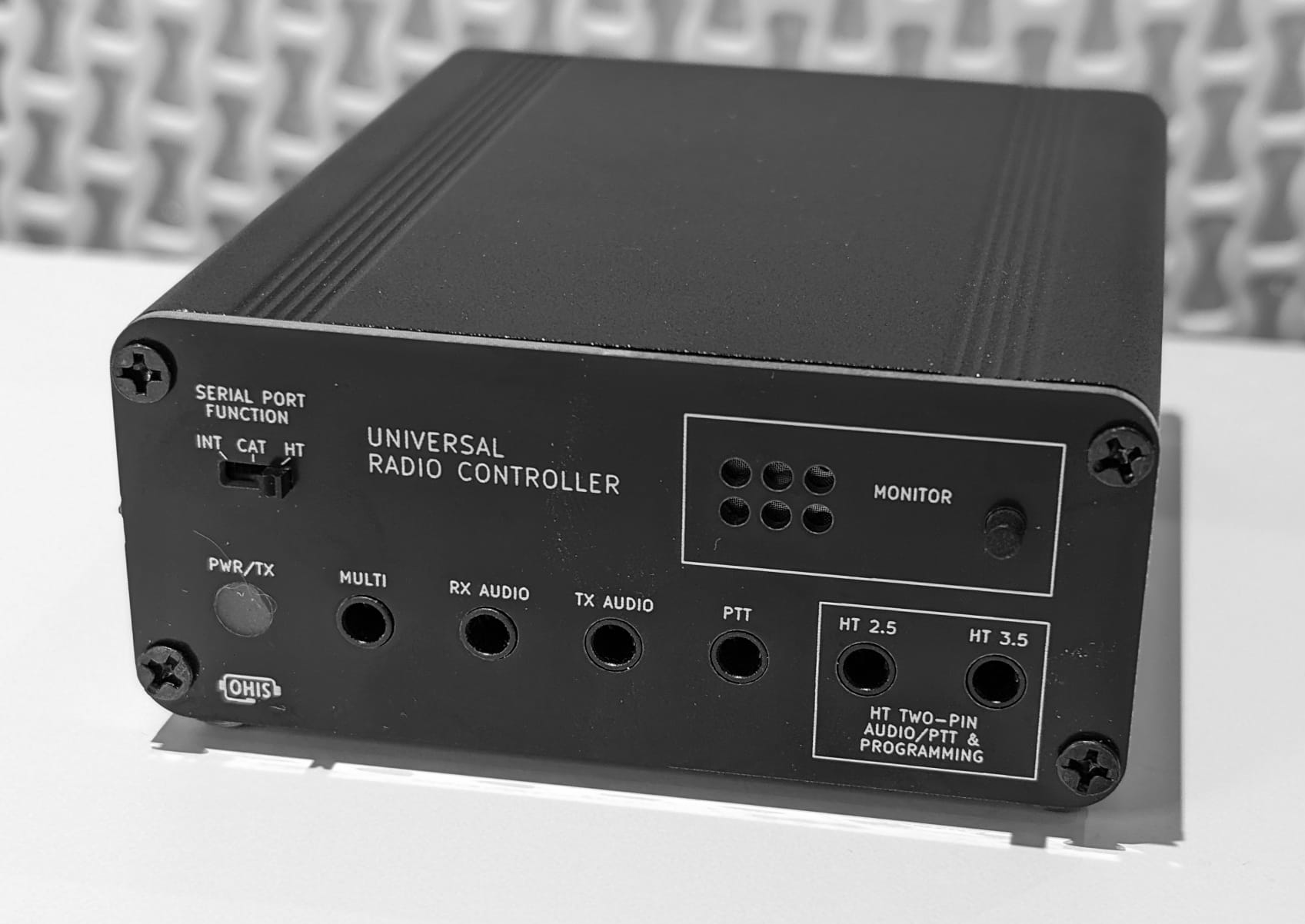


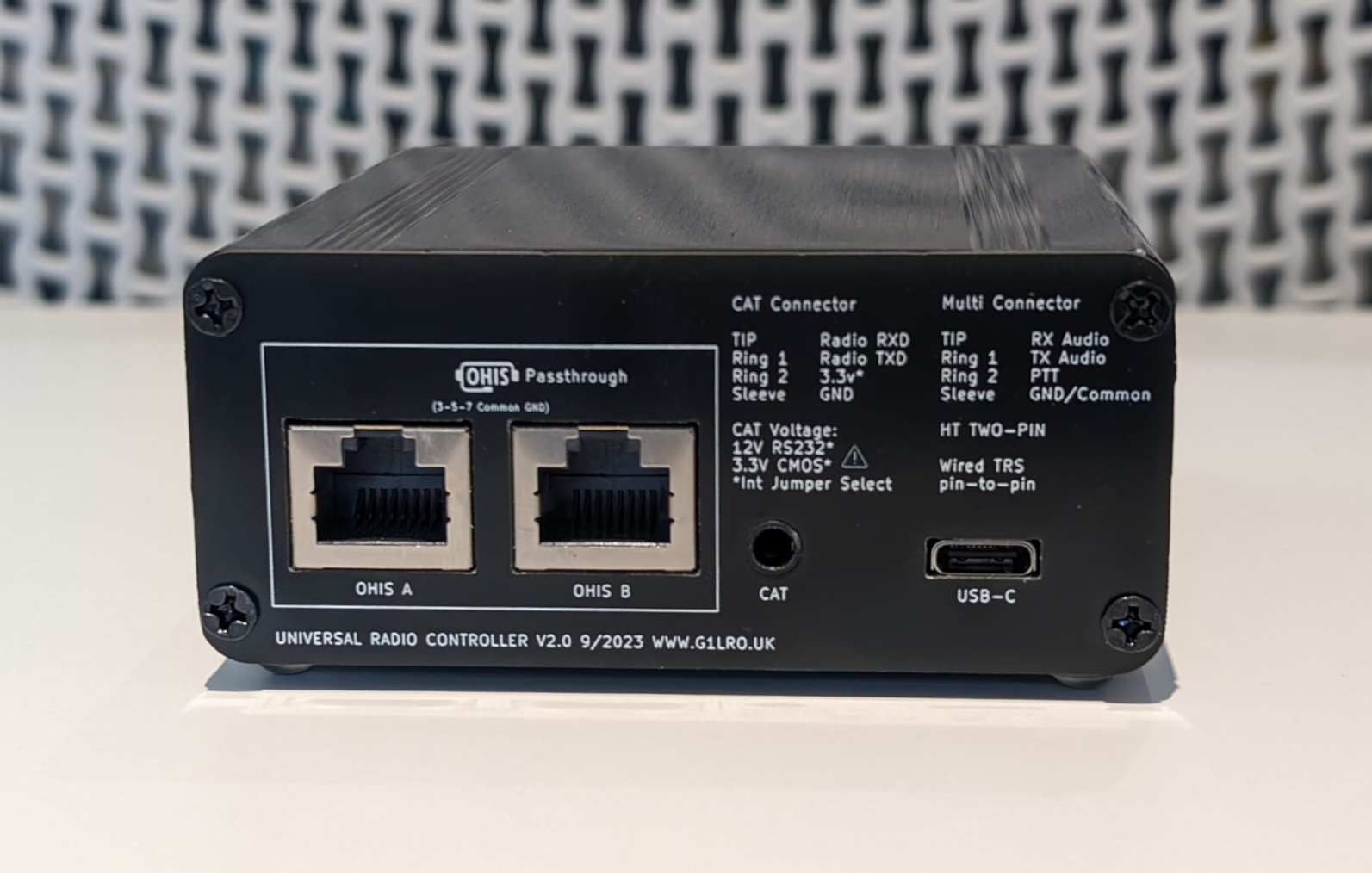
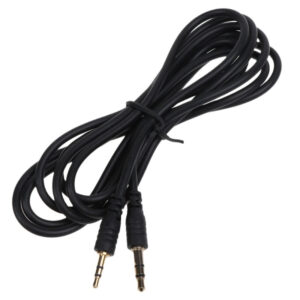
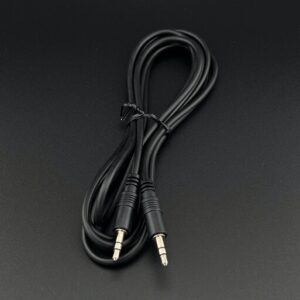
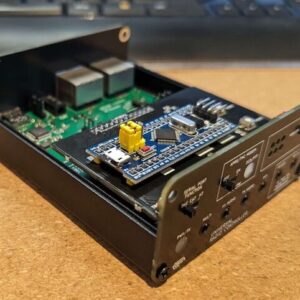
Reviews
There are no reviews yet.